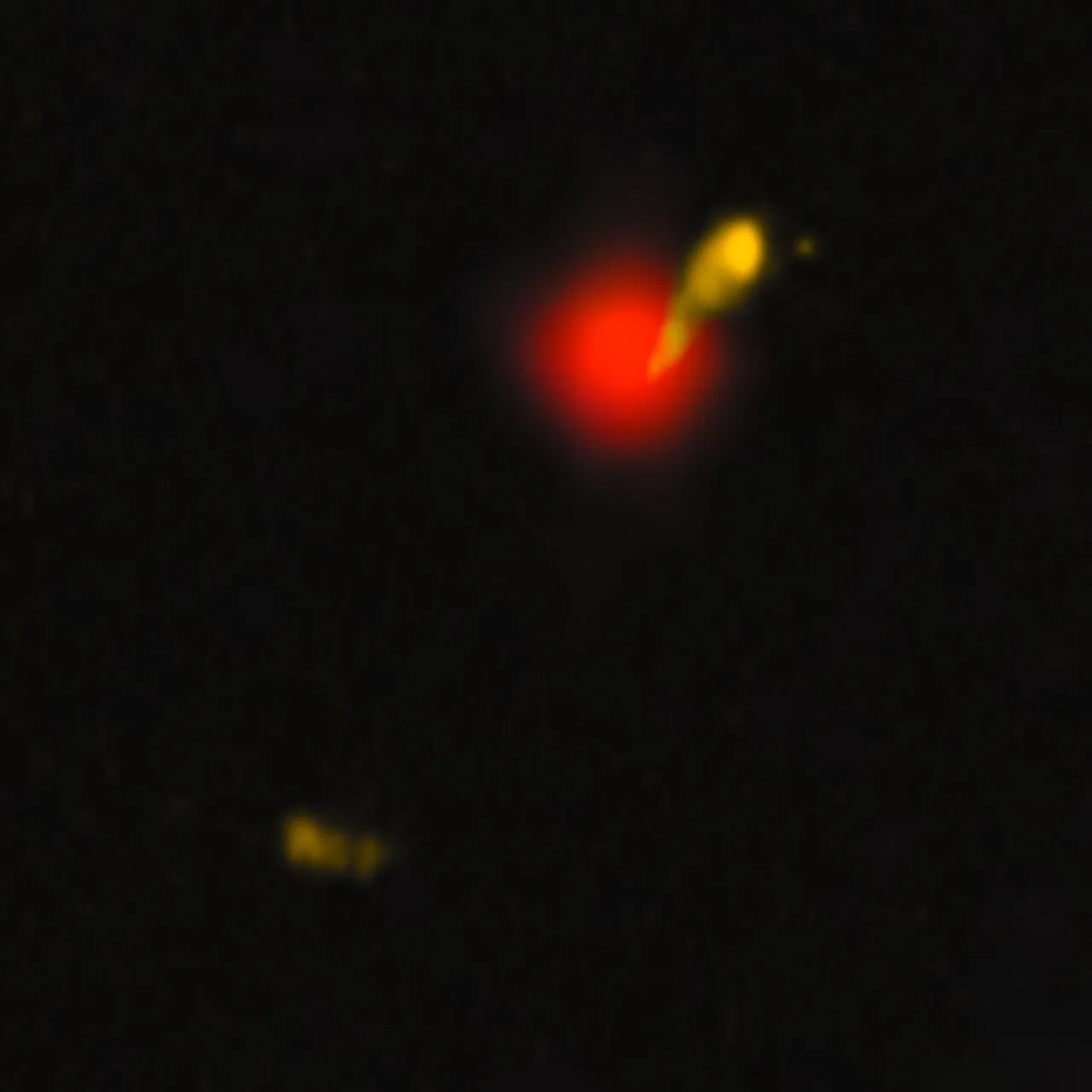Unveiling the Cosmic Colossus: The Largest and Oldest Black Hole Jet Ever Observed
Imagine peering back in time, not just centuries or millennia, but billions of years, to witness a cosmic spectacle unfolding in the universe's infancy. That's precisely what astronomers have achieved, revealing a monumental discovery that reshapes our understanding of the early cosmos: the largest and oldest black hole jet ever observed.
The Ancient Giant Revealed
This incredible relic from the dawn of time was observed as it existed only 1.2 billion years after the Big Bang, providing a direct window into a period of intense cosmic activity. The jet, originating from a powerful quasar designated J1601+3102, stretches an astonishing 200,000 light-years across space. To put that into perspective, it's roughly twice the diameter of our own Milky Way galaxy!
Remarkably, the supermassive black hole powering this colossal outflow, while still weighing in at approximately 450 million solar masses, is considered 'relatively small' for a quasar-driving behemoth of this kind. This highlights a crucial distinction: it's the jet itself that holds the record for size and age, showcasing the sheer energy and scale of these cosmic phenomena, rather than solely the black hole's mass.

Understanding Cosmic Jets
Black hole jets are colossal outflows of high-energy plasma, accelerated to nearly the speed of light from the intensely hot and turbulent accretion disk surrounding a supermassive black hole. These jets act like cosmic exhaust pipes, expelling vast amounts of energy and matter into the surrounding intergalactic medium.
While the black hole itself is incredibly long-lived, existing for far longer than the current age of the universe, these jets are somewhat transient phenomena. Episodes of powerful accretion that trigger these ejections might last for a few million years, with the visible jets dissipating over perhaps 100 million years as they interact with the intergalactic material and lose energy. Thus, what we are observing is a fleeting, yet immensely powerful, burst of activity from a black hole that continues to exist today, likely having evolved considerably since this light began its journey to us.
A Window to the Early Universe
This discovery is more than just a record-breaker; it's a profound window into the universe's infancy. Observing a structure of this magnitude so early in cosmic history challenges existing models of supermassive black hole formation. How did such massive black holes and the accompanying energetic phenomena arise so quickly after the Big Bang? This observation provides crucial data for theories suggesting that gargantuan black holes may have formed directly from the collapse of primordial gas clouds, acting as 'seeds' for subsequent galaxy formation, rather than growing solely from stellar collapse. It allows us to piece together the cosmic narrative of galaxy and structure formation in the primordial universe.
The Longevity of Black Holes vs. Their Activity
This observation also prompts fascinating questions about the fate of such cosmic giants. While the jet itself would have faded by now, what about the black hole that powered it? Supermassive black holes, even those with hundreds of millions of solar masses, are incredibly stable. Concepts like Hawking radiation, while theoretically valid, would take an unfathomable amount of time – vastly longer than the current age of the universe – to cause any significant mass loss. So, while the spectacular jet is long gone, the central engine, J1601+3102's black hole, is still out there, continuing its cosmic journey through time.
The Mystery of the Unseen
This discovery subtly reminds us of the vast unknowns that still permeate our cosmos. The universe is likely teeming with 'dark' objects – black holes that aren't actively feeding or emitting jets, making them nearly impossible to detect directly. These 'wandering' or 'rogue' black holes, unbound to specific galaxies, exist as ghostly cosmic wanderers, detectable only through gravitational lensing or their subtle gravitational influence on other celestial bodies. The cosmos holds many such secrets, challenging our perceptions of what's 'out there' and how much remains undiscovered.
Conclusion
The observation of the largest and oldest black hole jet is a testament to the dynamic and extreme nature of our universe. It pushes the boundaries of our understanding of cosmic evolution, black hole formation, and the intricate dance between matter and energy across billions of light-years and eons. Each such discovery is a humbling reminder of the universe's awe-inspiring complexity and the endless wonders awaiting our exploration.




